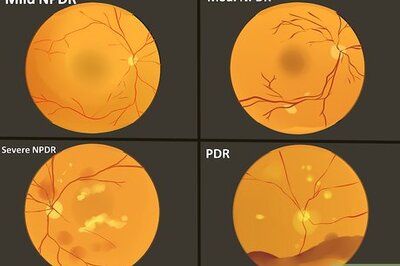
views
Rotis or chapatis are undoubtedly one of the most ubiquitous and fundamental food items in India. Found in nearly every desi household, regardless of social strata, these flatbreads made from pure wheat flour are a staple of Indian cuisine. Traditionally, rotis are rolled out and then placed on a pan, where they are baked over a direct gas flame until they achieve a light brown colour and puff up. However, are you aware of the potential health risks associated with baking rotis in this manner?
A 2015 study published in the journal Environmental Science and Technology highlights that natural gas stoves emit unhealthy levels of particulate matter, nitrogen dioxide and carbon monoxide when used for cooking. Such emissions have been classified as hazardous by the World Health Organization (WHO) and are linked to an increased risk of cancer, heart disease and respiratory ailments.
The WHO further warns that exposure to these air pollutants can heighten the likelihood of heart disease and respiratory problems. Cooking rotis directly over a gas flame at high temperatures can release carcinogenic compounds, significantly elevating the risk of colorectal cancer. A report from wellnesscorner.com elucidates that the process of pyrolysis, occurring at high temperatures when rotis are cooked directly over a gas flame, leads to the production of carcinogenic chemical compounds. Hence, reducing the consumption of rotis prepared in this manner may help mitigate the risk of cancer.
Despite the prevalence of this cooking method, particularly in rural and small-town settings where rotis are traditionally baked on a tawa, there are alternative approaches that offer both culinary and health benefits. Cooking rotis on a tawa, or griddle is a popular and time-honoured technique. After being flipped and cooked on both sides, the roti is often pressed with a cloth to ensure even cooking, which enhances its texture and taste.
Preparing rotis on a tawa offers several health advantages over direct gas flame baking. The flat surface of the tawa heats up uniformly, ensuring even cooking of the roti without subjecting it to excessively high temperatures. Consequently, the nutrients present in the roti, including fibre, protein and carbohydrates, remain intact, as they are neither destroyed nor altered by overheating. Additionally, minimal oil or ghee is required for cooking on a tawa, making it an ideal method for low-fat cooking.



















Comments
0 comment